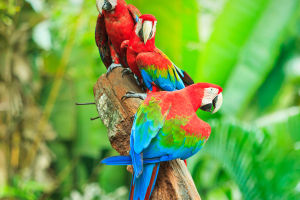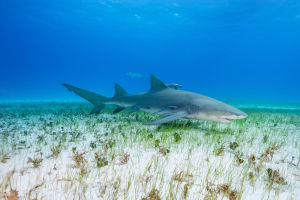Have you ever wondered how animals safely travel between fragmented forests, mountains, or parks? Wildlife corridors are the answer.
These carefully designed natural pathways allow animals to move safely from one habitat to another. In an increasingly human-developed world, these corridors are essential for survival, reproduction, and the preservation of biodiversity.
Let's dive into the fascinating world of wildlife corridors and why they matter more than ever.
The Problem of Habitat Fragmentation
Urban sprawl, highways, farms, and factories are constantly slicing through forests and natural spaces. This creates what scientists call "habitat fragmentation"—breaking large, connected ecosystems into small, isolated patches. When animal habitats are separated, populations become cut off. This limits their ability to find food, mates, or shelter, and makes them more vulnerable to predators and disease.
According to Dr. Eleanor Vance, a specialist in conservation ecology and population genetics:
"Habitat fragmentation stands as a primary catalyst for species decline by severing ecological connectivity. This disruption isolates populations into non-viable genetic islands, obstructs access to critical resources, and heightens extinction risk by impeding safe movement—compromising both individual survival and long-term reproductive resilience."
How Corridors Work
Wildlife corridors are strips of natural habitat that link larger ecosystems. They can take various forms:
• Green bridges or overpasses that cross highways
• Underground tunnels for small animals like turtles and frogs
• River pathways connecting wetlands and forests
• Linear green spaces in urban areas
These corridors allow animals to move freely and safely across landscapes, reducing the risk of being struck by vehicles or encountering human settlements.
Real-World Examples of Wildlife Corridors
Many countries have already implemented successful wildlife corridors:
• Banff National Park, Canada: Features overpasses and underpasses that allow elk, wolves and other animals to cross highways. These corridors have reduced wildlife-vehicle collisions by over 80%.
• Bee Highway, Norway: A network of flowering green rooftops and balconies in Oslo that helps pollinators thrive in the city.
These are just a few inspiring examples of how corridors can promote coexistence between humans and nature.
Why Corridors Are Critical for Biodiversity
Biodiversity—the variety of life on Earth—is essential for ecological balance. Wildlife corridors help maintain biodiversity by:
• Preventing inbreeding: Isolated animal populations often suffer from low genetic diversity. Corridors allow for gene flow, strengthening the health of species.
• Supporting seasonal migration: Many animals, such as deer, wolves, and birds, need to migrate to find food or suitable climates.
• Protecting endangered species: Corridors help species at risk find safer routes and larger living spaces.
A study published in Science Advances showed that connected habitats have 20% higher species richness than isolated patches.
Designing a Successful Wildlife Corridor
Building a corridor isn't as simple as adding a bridge. Several factors must be considered:
• Location and animal behavior: Corridors must be placed where animals naturally move.
• Vegetation: Native plants must be used to mimic the animal's original environment.
• Minimizing human disturbance: Fences, sound barriers, or vegetation buffers reduce light and noise that can scare animals.
• Monitoring and data collection: Tracking movement through satellite tracking systems and cameras helps scientists adjust designs for better outcomes.
These designs are often created in collaboration with ecologists, engineers, and urban planners.
Challenges and Controversies
Despite their benefits, wildlife corridors face obstacles:
• Land ownership issues: Corridors often pass through private land, requiring negotiation with multiple stakeholders.
• Funding and maintenance: Building and maintaining corridors requires long-term investment.
• Human-wildlife conflict concerns: Some communities fear that corridors will bring dangerous animals closer to populated areas.
However, with thoughtful planning and community involvement, many of these concerns can be addressed effectively.
Community Involvement and Education
Wildlife corridors don't just protect animals—they can also benefit people. Green spaces along corridors can provide opportunities for recreation, learning, and tourism. Educating the public on how and why corridors work increases support and understanding.
For example, schools in Costa Rica have incorporated corridor conservation into their curriculum, teaching children how animal movement relates to ecosystem health. Volunteers also participate in planting native trees along proposed corridor routes.
The Future of Wildlife Corridors
With the rise of climate change and urbanization, the need for wildlife corridors is only growing. Global initiatives like the Yellowstone to Yukon Conservation Initiative (Y2Y) aim to connect thousands of kilometers of habitat across North America. Meanwhile, international organizations are pushing for national corridor networks to be part of future environmental policy.
Technology also plays a role—drones, camera traps, and satellite imaging are helping identify optimal routes for corridors.
How You Can Make a Difference
You don't have to be a conservationist to support wildlife corridors. Here's how anyone can help:
• Support legislation that protects green space and builds corridors
• Donate to organizations building habitat connections
• Plant native species in your garden or on your roof to create micro-corridors for pollinators and birds
• Share knowledge about local projects and spread awareness
Even small efforts can create significant change when adopted widely.
Conclusion: Nature Needs Pathways
Wildlife corridors are more than just strips of land—they're lifelines for the planet's most vulnerable creatures. By reconnecting fragmented habitats, these green pathways support biodiversity, reduce conflict, and offer a vision of harmony between people and nature.
Have you ever seen a wildlife overpass or heard of a green roof buzzing with bees? Keep your eyes open—you might just be closer to nature than you think. Would you like to help build the next great pathway for wildlife?
Let's make space for nature to move freely—because when animals thrive, so do we.


